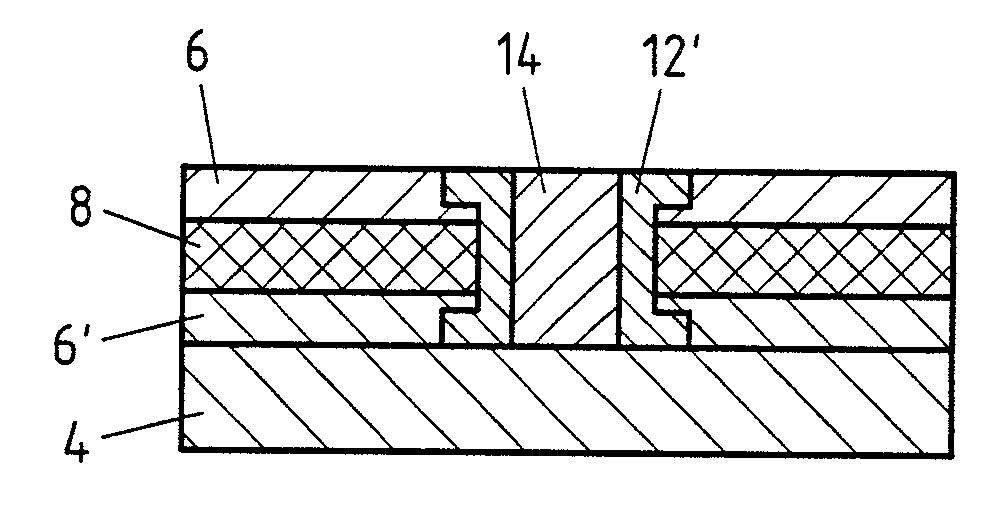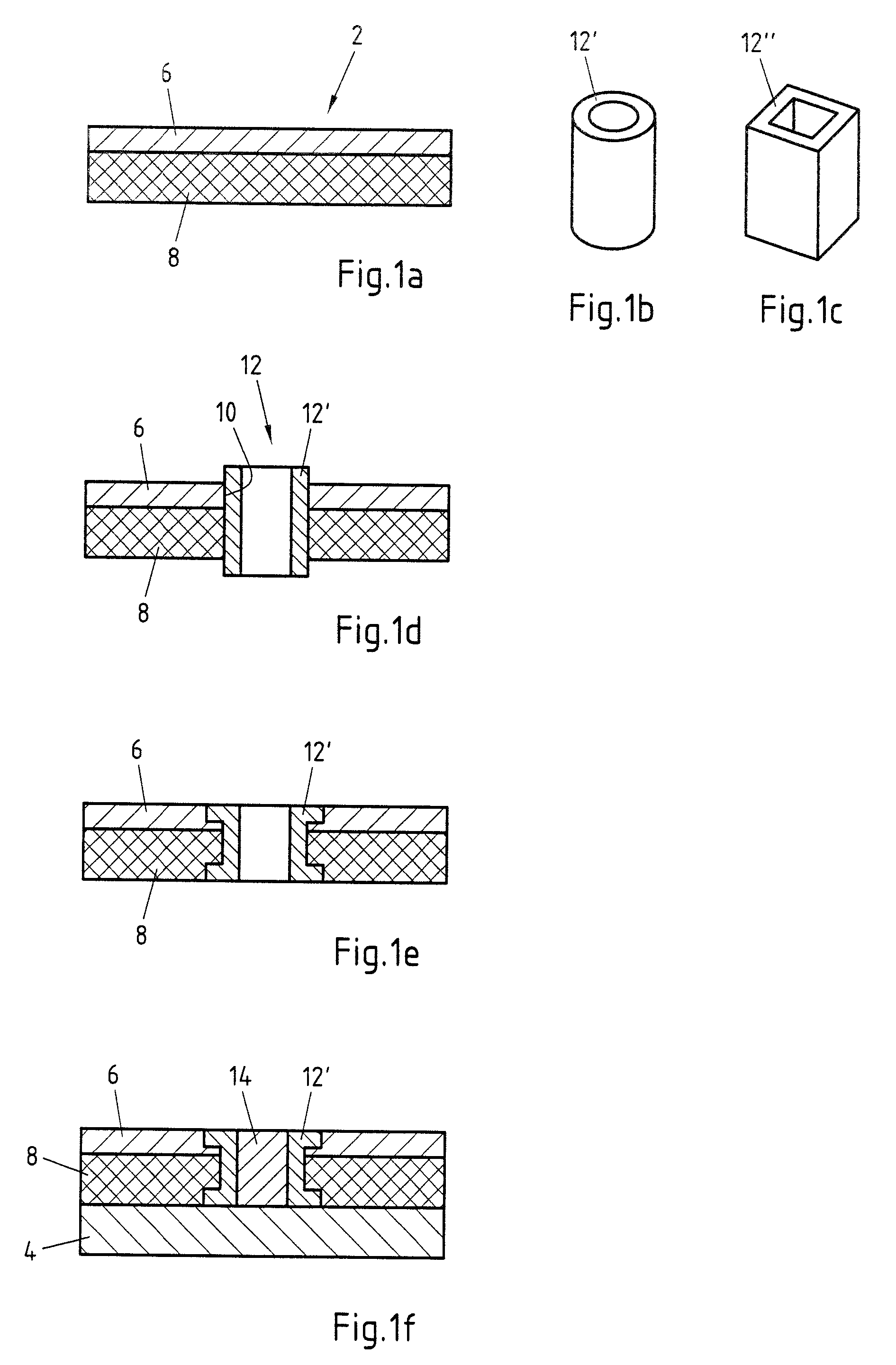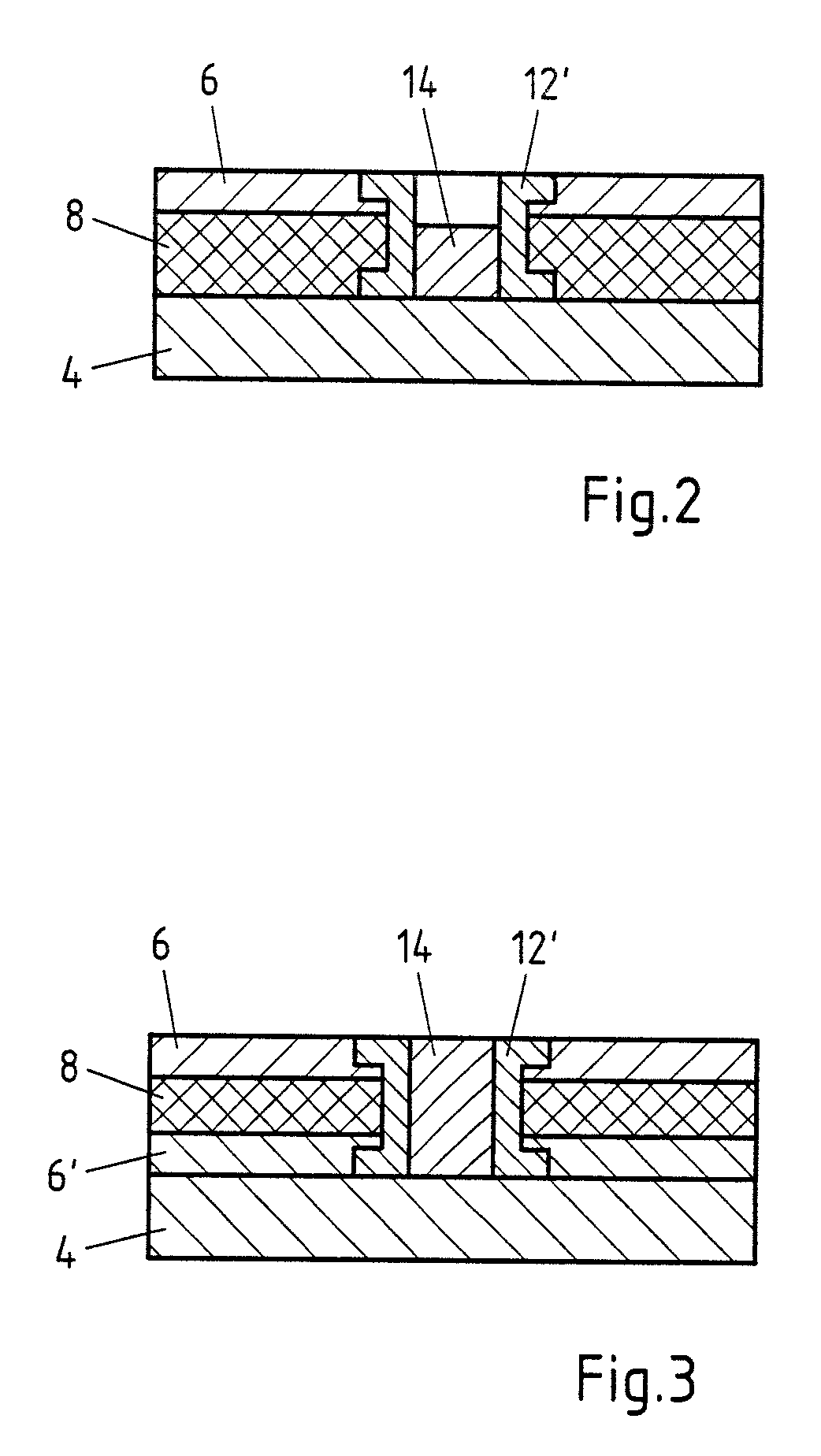Method for joining a composite sheet to a metallic substrate
a composite sheet and metallic substrate technology, applied in the direction of arc welding apparatus, resistance welding apparatus, laser beam welding apparatus, etc., can solve problems such as unstable arcs, and achieve the effect of cost-effective and effective vibration damping
- Summary
- Abstract
- Description
- Claims
- Application Information
AI Technical Summary
Benefits of technology
Problems solved by technology
Method used
Image
Examples
Embodiment Construction
[0034]FIGS. 1a to 1f respectively show individual steps of an exemplary embodiment of the method according to the invention. Specifically, FIG. 1a shows an exemplary embodiment of a composite sheet 2 which has a plastic layer 8 and a metallic top layer 6. The thickness of the plastic layer 8 is greater than the thickness of the metallic top layer 6 in the exemplary embodiment shown. It can, however, also be thinner. On the one hand, a large saving in weight can be obtained, but, in addition, the vibration-damping properties of the composite sheet 2 can also be improved.
[0035]FIGS. 1b and 1c show two exemplary embodiments of the sleeve 12′ which is inserted as a joining element 12 into the composite sheet 2. Both exemplary embodiments have the form of a hollow body. The cross-sectional area of the sleeve 12′ is round in FIG. 1b and the cross-sectional area of the sleeve 12″ in FIG. 1c is quadrangular. Of course, a sleeve 12′ with any other cross-sectional area, for example a polygona...
PUM
| Property | Measurement | Unit |
|---|---|---|
| thickness | aaaaa | aaaaa |
| metallic | aaaaa | aaaaa |
| sound absorption | aaaaa | aaaaa |
Abstract
Description
Claims
Application Information
 Login to View More
Login to View More - R&D
- Intellectual Property
- Life Sciences
- Materials
- Tech Scout
- Unparalleled Data Quality
- Higher Quality Content
- 60% Fewer Hallucinations
Browse by: Latest US Patents, China's latest patents, Technical Efficacy Thesaurus, Application Domain, Technology Topic, Popular Technical Reports.
© 2025 PatSnap. All rights reserved.Legal|Privacy policy|Modern Slavery Act Transparency Statement|Sitemap|About US| Contact US: help@patsnap.com



